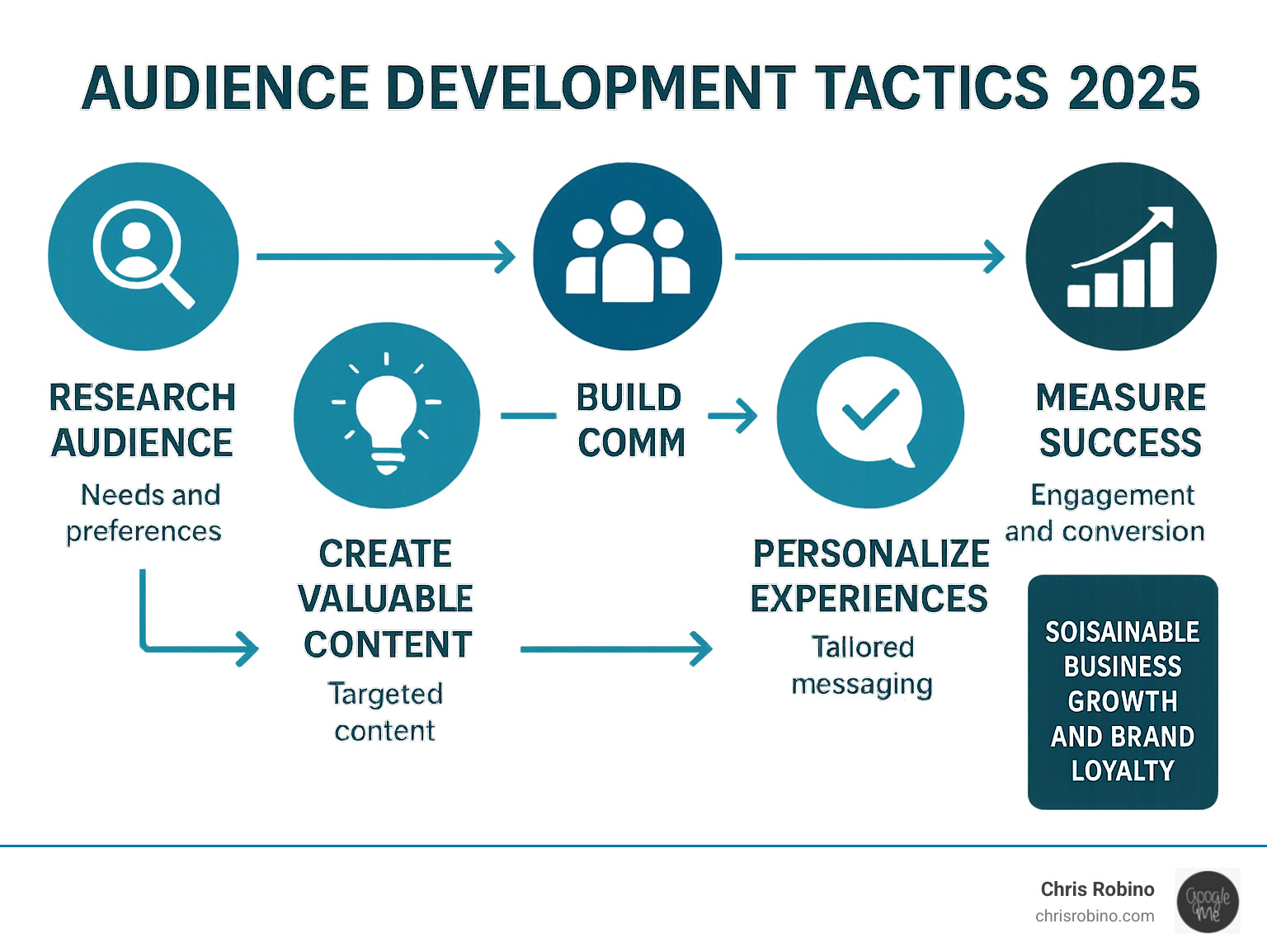Enterprise SEO That Scales: Why It Matters and How to Do It
Enterprise SEO is not about isolated keywords or one-off wins. Large companies manage thousands to millions of URLs, multiple brands and regions, complex tech stacks, and stringent legal and accessibility requirements. Success requires a durable operating model, reliable tooling, and a playbook that scales—without sacrificing quality or governance.
The goal of enterprise SEO is compound growth: building an owned, defensible traffic and revenue engine that improves over time. That means prioritizing technical excellence, content operations, cross-functional processes, and measurement. It also means making decisions that work across teams and geographies, not just for a single campaign.
This guide outlines the strategies that consistently perform for large organizations. You’ll learn how to:
- Establish governance so SEO isn’t dependent on one person or sprint
- Architect sites for crawl efficiency, indexation, and performance
- Produce and maintain high-quality content at scale (without thin duplication)
- Localize and internationalize effectively
- Strengthen authority through internal linking and digital PR
- Measure, forecast, and continuously improve with low risk
The outcome: faster discovery, better user experiences, higher non-brand traffic, and reliable revenue growth—delivered with the rigor an enterprise requires.

Enterprise SEO Pillars and Tactics That Work
Large organizations win when SEO becomes a system, not a set of tasks. These are the pillars and practical tactics that scale.
1) Governance and Operating Model
- Create an SEO council: representatives from product, engineering, content, design, legal, analytics, and customer teams. Meet biweekly to prioritize, unblock, and align.
- Define ownership: technical SEO owned by engineering with SEO input; content owned by editorial with SEO QA; analytics owned by data teams with shared KPIs.
- Bake SEO into delivery: add SEO acceptance criteria to the “definition of done,” and include SEO checkpoints in design and release workflows.
- Establish SLAs: e.g., critical indexation/performance defects fixed within a defined timeframe; content updates published within agreed windows.
- Document playbooks: migration runbooks, metadata standards, content templates, redirect patterns, canonical rules, and incident response procedures.
2) Technical Foundations at Scale
- Crawl budget management: use robots directives, crawl-delay policies (only if needed), and XML sitemaps segmented by content type and region. Keep sitemaps fresh with lastmod and ensure 200/Indexable targets.
- Canonicalization and parameters: standardize canonical tags, consolidate duplicate variants, and enforce parameter handling rules server-side where possible.
- Faceted navigation: prevent index bloat by disallowing infinite combinations; expose only valuable, searchable facets; use consistent canonical and internal linking rules.
- Pagination: avoid creating endless paginated index targets; provide logical category architecture and let primary pages capture intent. Ensure crawl paths to key items without deep chains.
- Site architecture: build clear hubs and spokes. Keep important paths shallow, use breadcrumbs, and maintain a consistent URL taxonomy across locales and brands.
- Rendering: where heavy JavaScript is required, use server-side or hybrid rendering to ensure timely findy and indexation parity. Validate content parity between rendered states.
- Performance: prioritize Core Web Vitals—optimize server response, image format/size, font loading, and script execution. Monitor Largest Contentful Paint, Cumulative Layout Shift, and Interaction to Next Paint.
- Structured data: implement schema for Organization, Product, Article, FAQ (where eligible), JobPosting, and LocalBusiness as applicable. Keep it accurate, minimal, and synchronized with on-page content.
- Security and cleanliness: enforce HTTPS, HSTS, and no mixed content. Eliminate 404/soft-404 clusters, fix redirect chains, and normalize trailing slash and casing rules.
- Log-file analysis: use logs to see how bots actually crawl; prioritize fixes based on wasted crawl and missed findy.
3) Content Strategy and Operations
- Demand mapping: inventory all intent types—informational, navigational, transactional, and post-purchase. Align topic clusters to the full customer lifecycle.
- Programmatic at scale: build high-quality templates for product, category, location, and comparison pages. Add unique value (attributes, expert insights, original media) to avoid thin duplication.
- Editorial excellence: use briefs with intent, entity coverage, internal links, and compliance notes. Have subject-matter experts and legal review where needed.
- Refresh and pruning: track decay and update content based on performance, SERP changes, and product shifts. Prune or consolidate pages that no longer serve clear intent.
- E-E-A-T signals: demonstrate experience and expertise with bylines, credentials, citations, and transparent sourcing. Maintain consistent brand and editorial standards.
- Localization: translate with transcreation—not literal copy. Account for regional search behavior, regulations, and alternate terminology.
4) Internal Linking and Authority Flow
- Automate internal linking: use rules to surface related content, recommended products, and regional alternates. Ensure links point to canonical URLs.
- Navigation and hubs: reinforce the hierarchy with smart nav, breadcrumbs, and footer links to high-value destinations.
- Link hygiene: watch for orphaned pages, parameterized duplicates, and outdated links. Update links during migrations and product sunsets.
5) International and Multi-Brand Architecture
- URL strategy: choose subfolders or subdomains per locale based on governance and infrastructure. Keep a consistent, documented pattern.
- Hreflang: implement accurate language/region annotations, referencing canonical URLs one-to-one. Validate with automated checks.
- Content ownership: clarify who maintains each region’s content, metadata, and redirects to avoid drift.
6) Local and Multi-Location SEO
- Store locator architecture: scalable hierarchy (country > state/region > city > location). Unique, useful content on each page: hours, services, inventory highlights, and localized FAQs.
- Profile management: maintain accurate business profiles on major search and map platforms. Automate data sync, review responses, and holiday hours.
- Citations and consistency: keep NAP data consistent across directories. Use bulk feeds and monitoring to fix drift.
- Tracking: use clean URLs and parameters for local campaigns; measure calls, directions, bookings, and footfall where available.
7) Digital PR and Off-Site Signals
- Focus on quality and relevance: secure links and mentions from reputable publications, partners, and industry organizations.
- Create cite-worthy assets: data studies, tools, calculators, and guides. Pitch with unique angles.
- Brand protection: monitor for unlinked mentions and request appropriate attributions. Avoid manipulative link schemes.
8) AI and Automation With Guardrails
- Use AI for research, briefs, outlines, and variant metadata—always with human review and fact-checking.
- Automate repetitive tasks: redirect validation, sitemap checks, structured data QA, and internal link audits.
- Governance: prevent sensitive data leakage; require human approval for any AI-generated content that reaches production.
9) Risk Management and Migrations
- Pre-launch checklists: parity tests for content, metadata, hreflang, and structured data; performance budgets; redirect maps; staging index controls.
- Phased rollouts: monitor impact in controlled cohorts. Maintain rollback plans.
- Post-launch validation: check logs, index coverage, and rankings. Address gaps quickly with prioritized fixes.
Put together, these tactics create a scalable system: findable, fast, and authoritative pages that map to real user intent—across brands, products, and regions.
Measurement, Forecasting, and Continuous Improvement

Enterprise SEO performance is proven with data, not anecdotes. Build a measurement framework that links technical health, visibility, and content quality to business outcomes.
Key Metrics to Track
- Revenue and pipeline: organic revenue, margin, and influenced pipeline for lead-gen. Segment by brand, product, and region.
- Non-brand traffic: isolate branded queries to see true discovery growth.
- Share of voice: monitor coverage and rank across priority topics; track gains by cluster.
- Index coverage and crawl efficiency: valid vs. excluded pages, error trends, and wasted crawl on non-indexable URLs.
- Technical health: Core Web Vitals pass rates, 4xx/5xx rates, redirect chains, canonical conflicts, structured data errors.
- Conversion metrics: conversion rate, assisted conversions, and post-click engagement (time on task, scroll depth).
- Content vitality: publish velocity, update cadence, decay curves, and consolidation impact.
- Local performance: visibility distribution across locations, action metrics (calls, directions), and review volume/sentiment.
- Backlink quality: referring domain diversity, topical relevance, and authority of linking sources.
Forecasting and Planning
- Opportunity models: estimate traffic and revenue upside by closing gaps in rank, content coverage, and Core Web Vitals. Prioritize initiatives by projected impact and effort.
- Scenario planning: best/base/worst-case outcomes for product launches, seasonal peaks, and migrations. Set executive expectations early.
- Attribution alignment: align with broader analytics and media measurement so organic impact is recognized across journeys.
Experimentation and QA
- SEO A/B testing: server-side experiments for templates (titles, content modules, internal links). Use holdouts to quantify incremental impact.
- Pre-production checks: automated linting for metadata, indexability, hreflang, and structured data before each release.
- Alerting: proactive alerts for traffic anomalies, index coverage shifts, and performance regressions.
Common Pitfalls to Avoid
- Fragmented ownership: unclear roles lead to slow fixes. Solve with an SEO council and documented SLAs.
- Vanity metrics: high impressions without conversions isn’t success. Tie goals to revenue, leads, or qualified actions.
- Thin programmatic pages: scale does not mean duplication. Add unique content, data, and UX value or consolidate.
- Orphaned content: enforce internal linking rules and run frequent audits.
- Overreliance on third-party platforms: build and protect owned channels; do not let critical content live only on rented space.
- Accessibility gaps: SEO and accessibility are aligned—fix issues that hinder both users and bots.
- Poor change management: undocumented changes create puzzles. Log releases and maintain a central change log.
A 90-Day Roadmap for Momentum
- Days 1–30: audit technical health and index coverage; implement quick wins (robots, sitemaps, canonical fixes); set KPIs and dashboards; form the SEO council.
- Days 31–60: finalize content strategy by cluster and template; launch internal linking improvements; prioritize performance upgrades; begin local and international cleanup.
- Days 61–90: ship refreshed priority templates; roll out structured data; start PR campaigns with cite-worthy assets; run first SEO A/B tests; present early results and next-quarter plan.
Executed well, enterprise SEO creates a resilient growth engine that compounds. It aligns teams around clear standards, scales content and technical excellence, and turns organic search into a predictable contributor to revenue.

